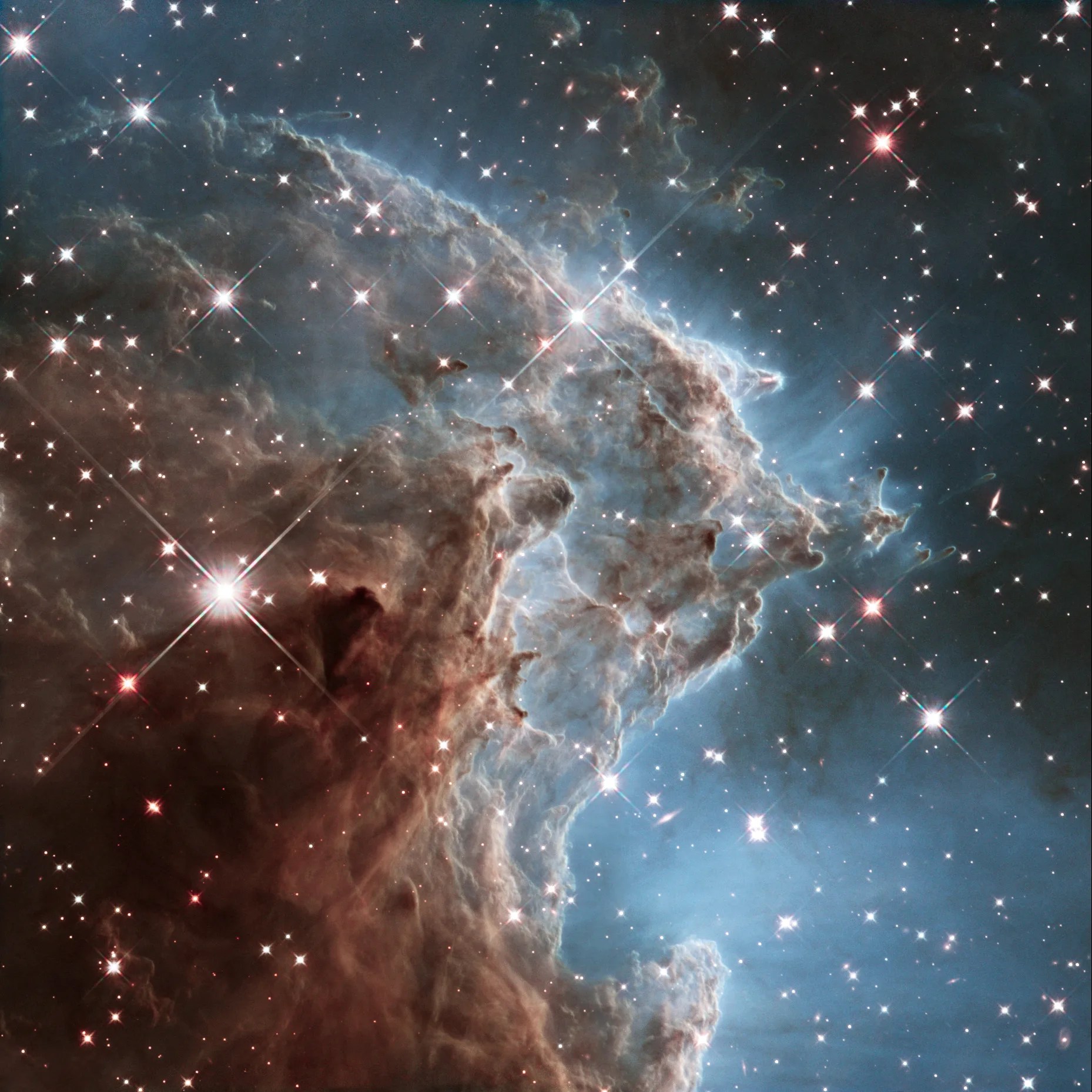In celebration of the 24th anniversary of the launch of NASA's Hubble Space Telescope, astronomers have captured infrared-light images of a churning region of star birth 6,400 light-years away.
This colorful Hubble Space Telescope mosaic of a small portion of the Monkey Head Nebula unveils a collection of carved knots of gas and dust silhouetted against glowing gas. The cloud is sculpted by ultraviolet light eating into the cool hydrogen gas.
Image Credit: NASA, ESA, and the Hubble Heritage Team (STScI/AURA)


































